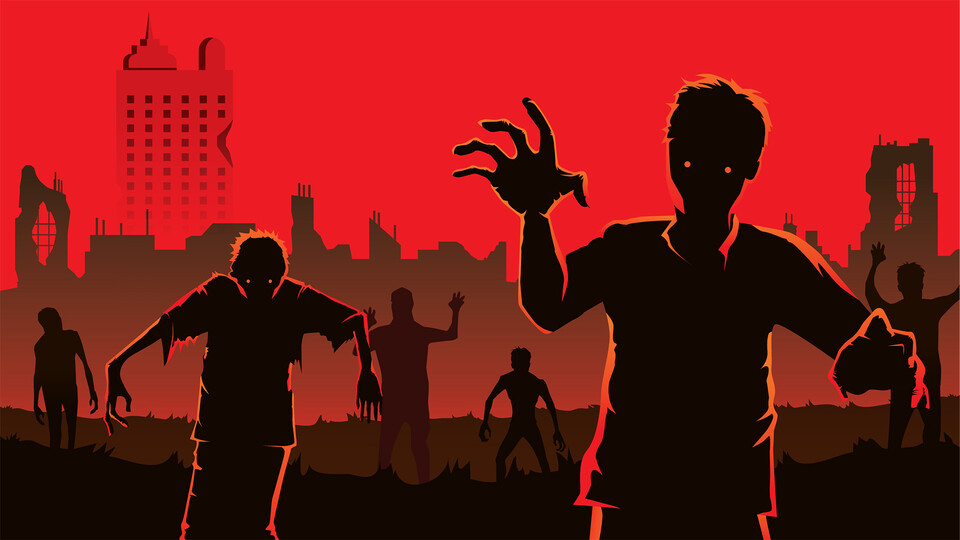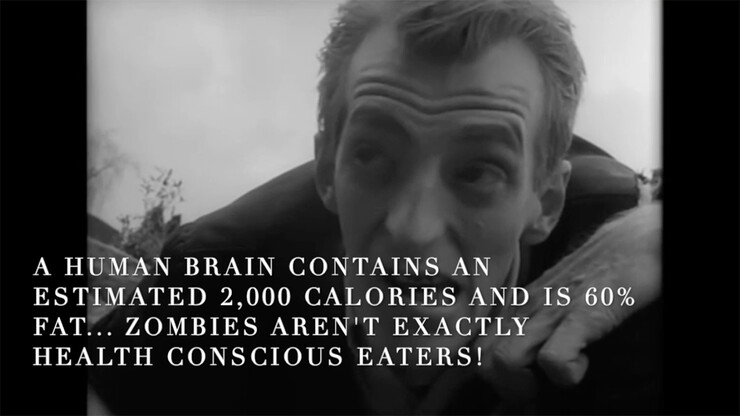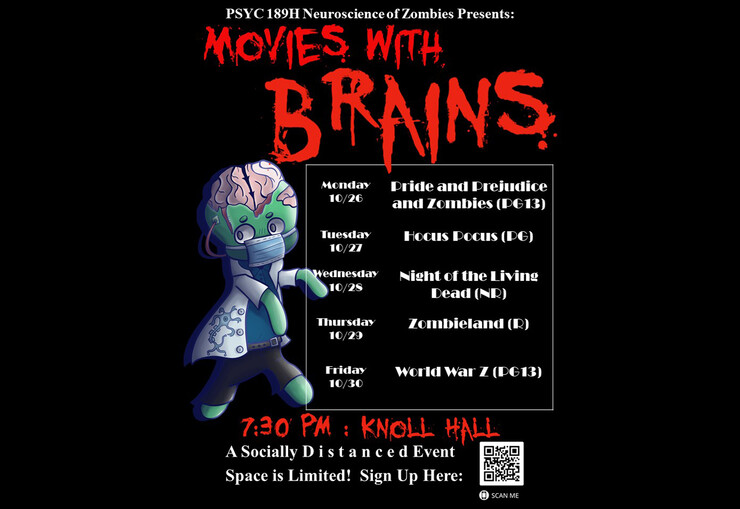· 5 min read
Role reversal: Honors students chew on zombie braaaains

In a twist that may keep the undead up all day, honors students at the University of Nebraska–Lincoln are probing the psyche of zombie brains.
Through “The Neuroscience of Zombies,” a Honors Program course led by Jacquelyn Omelian, assistant professor of practice in psychology, first-year students are linking the fictional behaviors of zombies to real-world neuroscience.
“It’s your standard introduction to neuroscience course, just filtered through a zombie lens,” Omelian said. “We consider everything we know about the nervous system disorders and apply them — using observation and traditional research methodology — to define what is going wrong in the brain and how it led to zombie symptoms.”
Omelian modeled the course after “Do Zombies Dream of Undead Sheep,” a book by Bradley Voytek and Timothy Verstynen. After reading the text, Omelian recognized it could be used in an engaging and interactive way to teach the foundations of neuroscience. She initially crafted the zombie-focused unit as a one-day course lecture. When the opportunity arose to teach an honors seminar on any topic of her choosing, Omelian jumped at chance to expand the undead focus.
“I was really nervous about presenting the idea,” Omelian said. “I had everything planned — from the syllabus to assessments and learning outcomes — because I didn’t want anyone to think this was me trying to sit around and watch zombie movies with students all day.”
The basics of an introductory to neuroscience course remain, as students learn how the nervous system functions and how injuries or damage can impact the brain. Instruction shuffles past tradition by using zombies as case models rather than disorders such as Parkinson’s disease or multiple sclerosis.
Diagnoses are shaped by discussions after students watch clips from classic zombie films. The students identify where a zombie may have sustained central and peripheral nervous system damage connecting it to the way they move, talk and behave.
“We look at how the neurological system works and responds, then apply it to define zombie behaviors,” Omelian said. “For example, zombies are always hungry, so it could mean they have a nutrition deficit or, maybe, it could be a super-extreme case of diabetes. Or, if a zombie is limping and shows weakness on the left side, we know there’s damage on the right side of the brain, because it has contralateral controls.”
The course also requires an experiential experience in the form of sharing information learned and being able to share the science with interested laypeople.
During fall 2019, the experiential component featured a “Learn to Walk Like a Zombie” event, where honors students in the course worked one-on-one with peers to show a zombie would walk based on motor and language deficits. They also explained causes of zombie-like brain damage and whether it could happen through parasite, virus or neurotoxin.
This fall, due to COVID-19 concerns and the need for social distancing, Omelian redirected the experiential project into a week of informational film screenings. Working in small groups, students in the course picked a zombie-related film and selected teaching moments from each.
“They put text overlay at those moments to introduce concepts they’ve learned this semester,” Omelian said. “There are facts sprinkled through every one of the films.”
In one example, at the moment a zombie-fied daughter is poised to take a bite out of her mother, a fact pops up to let viewers know the undead most likely do not recognize friends and family. The reason: Due to possible brain damage in the fusiform gyrus, a region that helps identify faces.
In another moment, as a “Night of the Living Dead” zombie gorges on brains, viewers are informed that there’s no such thing as diet zombie food as the average human brain contains about 2,000 total calories, with 60% coming from fat.
“It’s really a lot of fun, and they did a fantastic job making sure the information was educational but entertaining,” Omelian said.
The “Movies with Brains” series is showing all this week, with limited access at 7:30 p.m. in Knoll Hall. Registration, available here, is required. Films showing through Friday are:
- Nov. 28 — Night of the Living Dead (not rated)
- Nov. 29 — Zombieland (Rated R)
- Nov. 30 — World War Z (Rated PG-13)
Films that showed earlier in the week include “Pride and Prejudice and Zombies” and “Hocus Pocus.”
The “Neuroscience of Zombies” course (listed as PSYC 189H) is offered annually during the fall semester. For more information, contact Omelian at jomelian@unl.edu.










